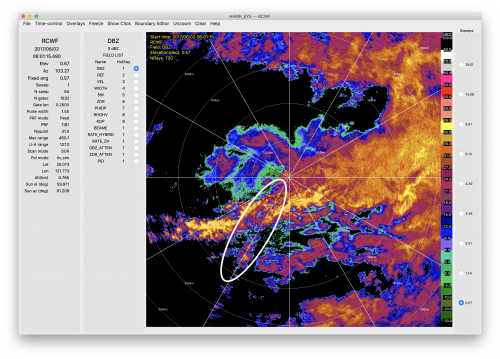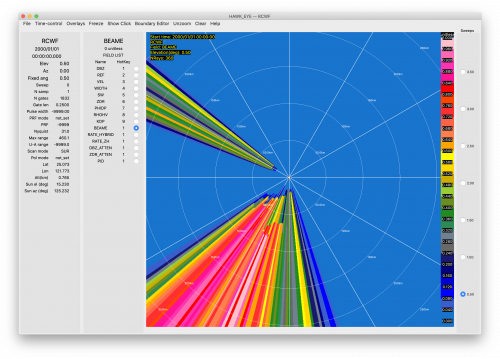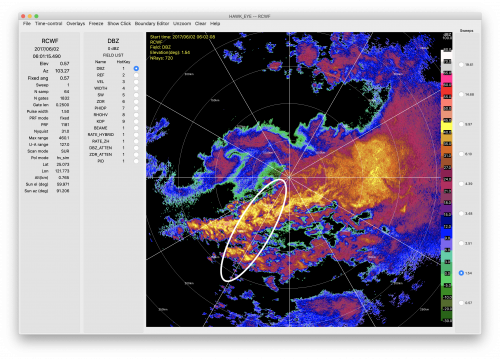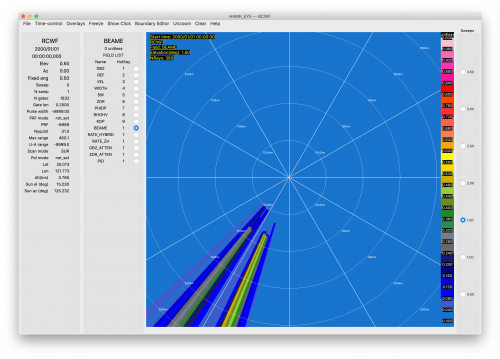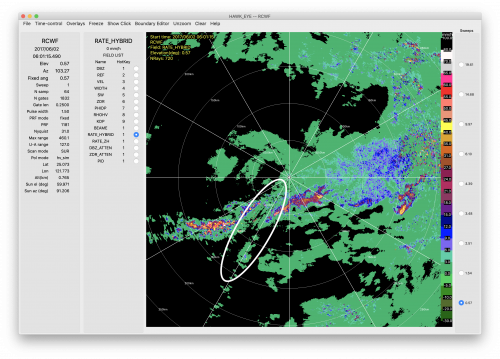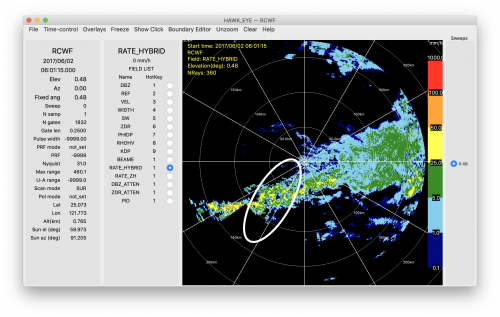Difference between revisions of "RadxQpe expanded"
From Lrose Wiki
| Line 11: | Line 11: | ||
[[File:Rate_dbz_1pt5_annotated.png|500px]][[File:beame_1pt5.png|500px]] | [[File:Rate_dbz_1pt5_annotated.png|500px]][[File:beame_1pt5.png|500px]] | ||
| − | RadxQpe takes advantage of the three-dimensional radar volume to look at different elevation angles in regions where terrain exists to find to elevation angles closest to ground level. This process is done by linking to the output from RadxBeamBlock in the RadxQpe parameter file. While the estimated precipitation rate from lowest elevation angle in the RadxRate file (left image) is discontinuous, RadxQpe's estimate of surface precipitation (right image) displays the precipitation rates occurring above the Taiwanese mountain range. | + | RadxQpe takes advantage of the three-dimensional radar volume to look at different elevation angles in regions where terrain exists to find to elevation angles closest to ground level. This process is done by linking to the output from RadxBeamBlock in the RadxQpe [http://wiki.lrose.net/index.php/RadxQpe#Important_parameters parameter file]. While the estimated precipitation rate from lowest elevation angle in the RadxRate file (left image) is discontinuous, RadxQpe's estimate of surface precipitation (right image) displays the precipitation rates occurring above the Taiwanese mountain range. |
[[File:Rate_rhybrid_annotated.png|500px]][[File:Qpe_rhybrid_annotated.png|500px]] | [[File:Rate_rhybrid_annotated.png|500px]][[File:Qpe_rhybrid_annotated.png|500px]] | ||
Revision as of 19:04, 22 January 2021
Overview
The goal of RadxQpe is to provide the best two-dimensional estimate of rainfall at ground level. To do so, RadxQpe must account for areas of weak signal, elevated terrain, and the height of the radar beam. This page will walk through how the application handles these factors to produce the end result.
Elevated Terrain
In certain regions, mountain ranges block radar beams at lower elevation angles, as shown in the example of a 0.5º elevation sweep from northern Taiwan below. The white oval highlights weak reflectivity values in the middle of the east-west line of heavy reflectivity values. The region of weak reflectivity corresponds to beam blockage by Taiwan's Central Mountain Range, as shown in the image of beam blockage (represented as a fractional value in the right image.
However, radars usually scan three-dimensional volumes and at an elevation angle of 1.5º, the band of intense reflectivity values in the oval is no longer discontinuous and the beam blockage is far less.
RadxQpe takes advantage of the three-dimensional radar volume to look at different elevation angles in regions where terrain exists to find to elevation angles closest to ground level. This process is done by linking to the output from RadxBeamBlock in the RadxQpe parameter file. While the estimated precipitation rate from lowest elevation angle in the RadxRate file (left image) is discontinuous, RadxQpe's estimate of surface precipitation (right image) displays the precipitation rates occurring above the Taiwanese mountain range.
